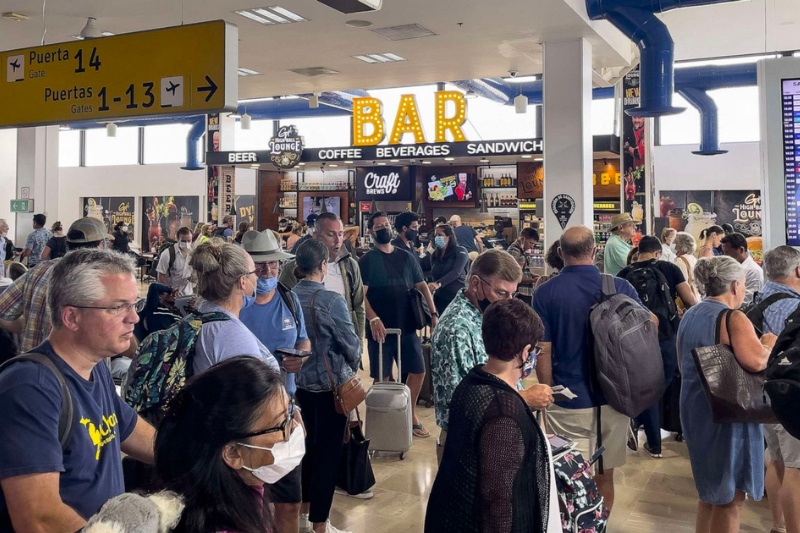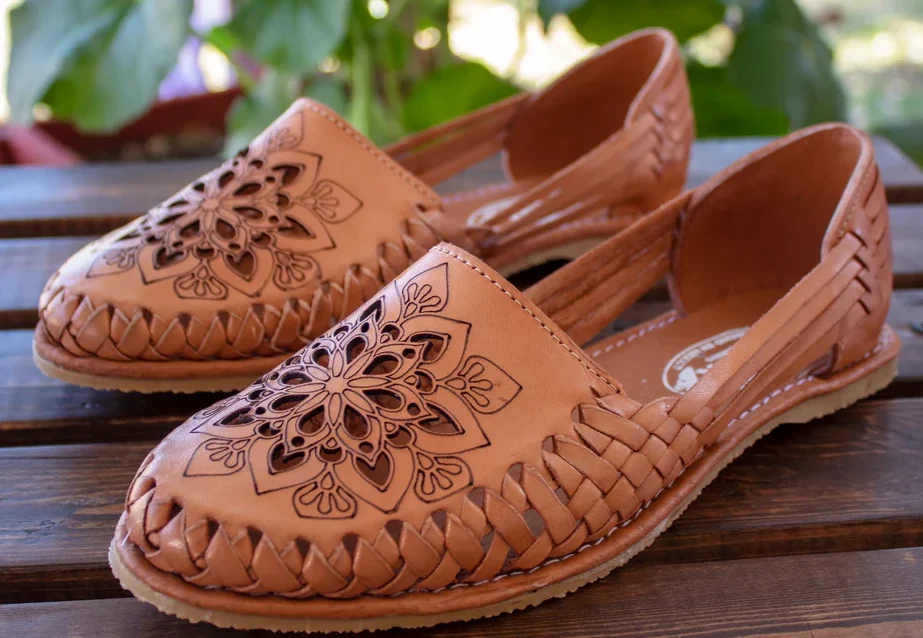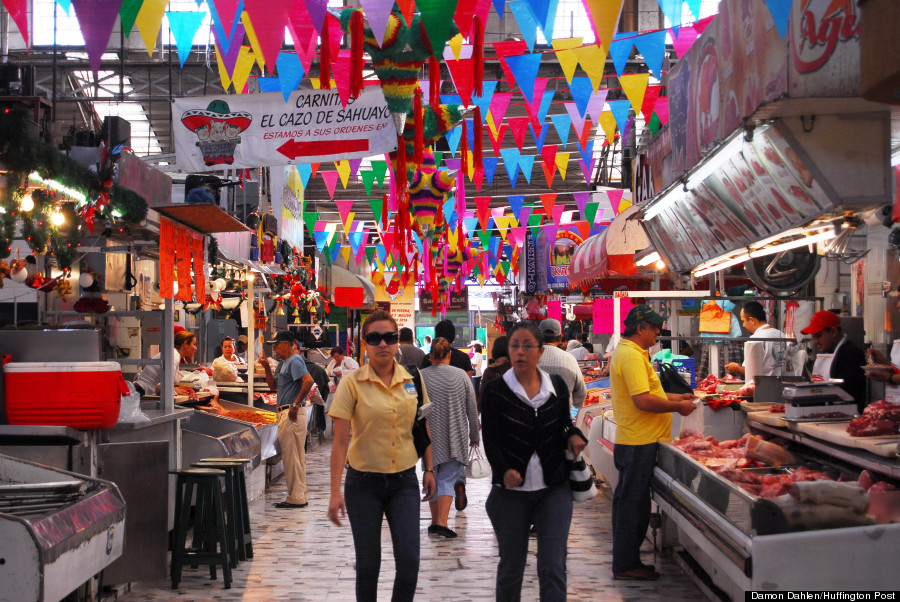Discover the Most Iconic Tianguis Mexico
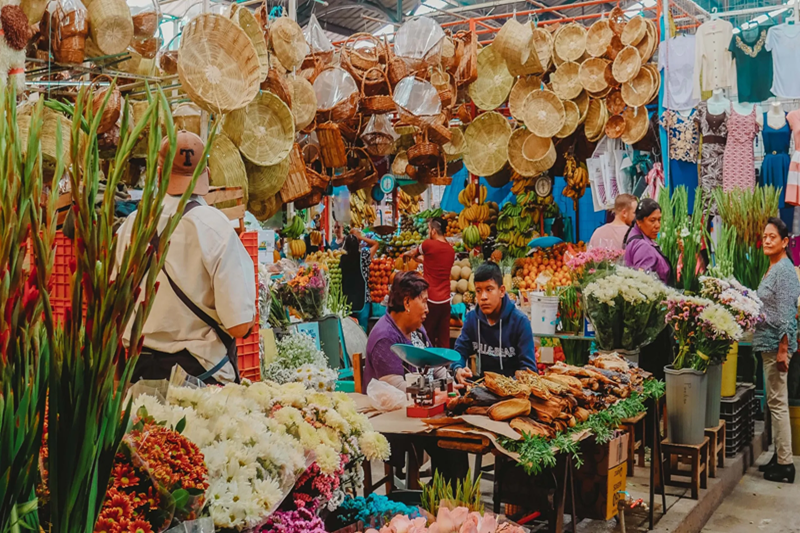
Tianguis Mexico are part of the tradition and culture that characterize this vibrant and colorful country. Here’s everything you need to know about Tianguis Mexico .
Tianguis Mexico are the traditional markets of the country, forming part of the culture and customs of its inhabitants since pre-Hispanic times. They have evolved over the years through various social processes that have occurred in the region over the centuries.
In countries like Spain, especially in Andalusia, tianguis are known as “rastros” or “mercadillos,” while in the United States, they are called “flea markets.” In Costa Rica, they are known as “tilicheras,” “flea markets,” “remates,” or “farmer’s fairs” when it comes to food. In Peru, they are called “cachinas,” and in Argentina and Chile, they are referred to as “ferias” or “ferias de las pulgas.”
It’s important to highlight that tianguis are a blend of the mercantile traditions of pre-Hispanic Mesoamerican peoples, mainly the Nahuatl, and the popular bazaars of the Middle East brought to the Americas by the Spanish. Additionally,Tianguis Mexico are typically semi-fixed, meaning you’ll find them on designated streets and days according to local customs. In these markets, you can buy products such as food, clothing, and household appliances, and they usually take place every five days.
Learn all about:Exploring the Diverse Languages Spoken in Mexico: From Spanish to Indigenous Tongues
History and Origin of the Tianguis in Mexico
The term “tianguis” translates to “market” and comes from the Nahuatl word “tianquiztli.” This type of market is not like traditional ones as it has a mobile nature. In pre-Hispanic times, they were established to serve as centers of social and economic life for the indigenous population that roamed the Mexican territory.
Tianguis Mexico were found in the urban centers of significant pre-Hispanic cities, making it easier for people to gather to buy and sell goods essential for their daily lives. It is important to note that in these tianguis, bartering was commonly used as a method of payment. Therefore, if you needed a product or service in pre-Hispanic times, you had to offer something of interest to the seller. Another common method of payment was cacao beans or tools made of copper.
Ancient Tianguis Mexico were held in areas where people gathered to conduct commercial activities and exchanges. According to the National Institute of Anthropology and History (INAH), there are still tianguis today that have origins in ancient Mexico. Some of these include the Tianguistengo and Otumba markets in the State of Mexico, Zacualpan de Amilpas in Morelos, Cuetzalan in Puebla, Tenejapa and San Juan Chamula in Chiapas, Ixmiquilpan in Hidalgo, and Chilapa in Guerrero.
These Are the Main Pre-Hispanic Tianguis in Mexico
In pre-Hispanic times, there were many tianguis; however, two stood out significantly in what is now known as the territory of Mexico: the Tianguis Mexico of Tenochtitlán and Tlatelolco. Here, we will talk about these tianguis:
Tianguis of Tenochtitlán
Tenochtitlán was one of the most important cities of the pre-Hispanic era, making its tianguis very popular among the population. Numerous vendors from distant lands came to this tianguis, creating a constant cultural exchange that enriched both sellers and buyers.
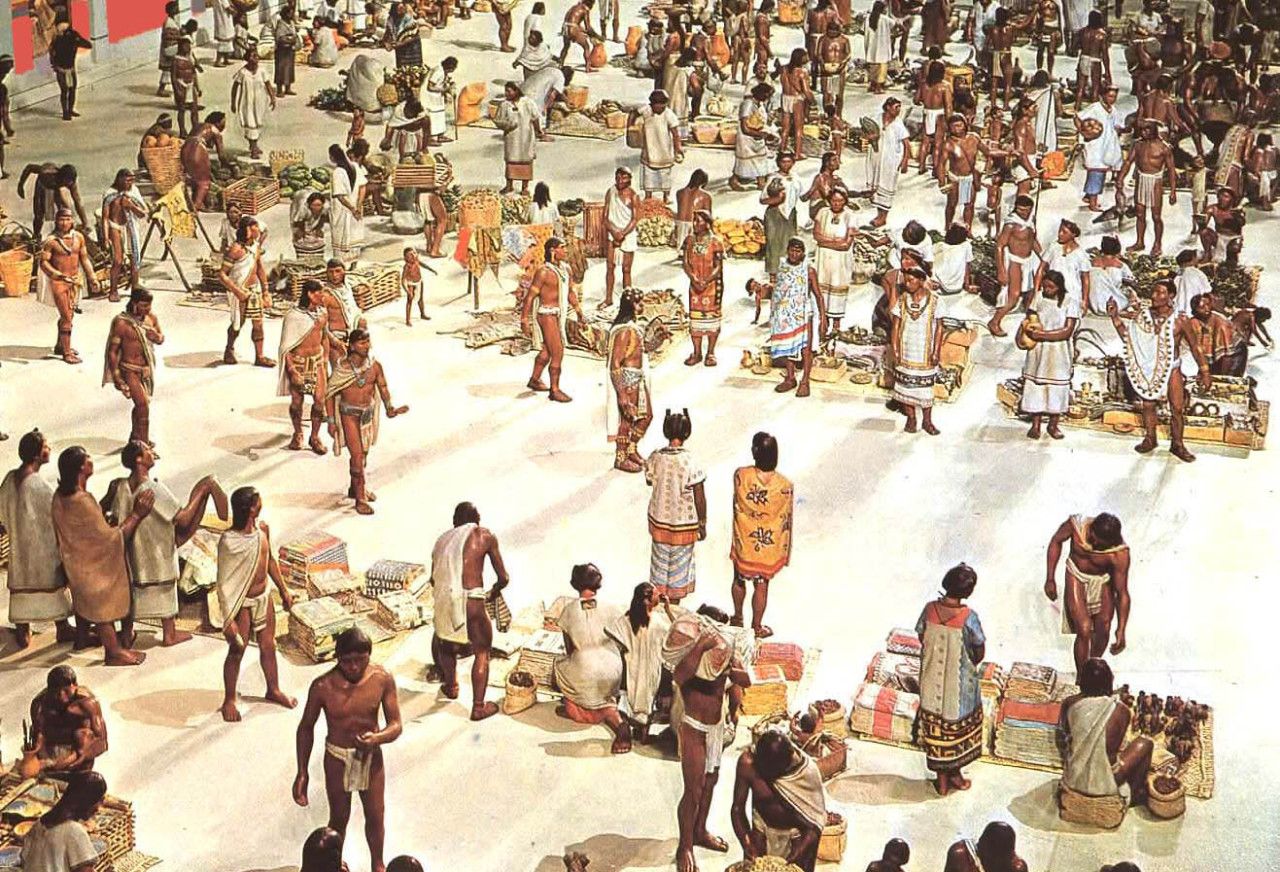
Learn all about: Mexican Flag vs Italian Flag: Key Differences and Historical Background
Additionally, the Tianguis Mexico of Tenochtitlán had a well-organized system, where buyers resorted to bartering or paying with cacao beans considered currency, small copper axes, or blankets to make their purchases. However, the tianguis of Tenochtitlán was also known for occasional conflicts that particularly surprised the Spanish conquerors. Theft or cheating was resolved by judges and guards who were tasked with ensuring order and justice.
Tianguis of Tlatelolco
Tlatelolco became the main commercial city, making itsTianguis Mexico extremely important as it was the primary center of exchange for the entire area, where you could find any product and merchandise.

The most popular products in Tlatelolco were of local origin, from the Valley of Mexico, but there were also products brought from distant places. Typically, merchandise from the Valley of Mexico was offered by farmers, artisans, and hunters, so they were first-hand products. The products offered included beans, chia, fresh and dried chilies, amaranth, dried corn, chard, spinach, squash, sweet potato, tomato, medicinal roots, avocado, roasted meats, tortillas, tamales, atole, live animals like ducks and dogs, hawks, eagles, skins, clothing, stone, wood, blankets, among others.
Evolution of the Tianguis in Mexico
After the Spanish conquest, tianguis, like many cultural and traditional aspects of Mexican territory, were influenced by European and Middle Eastern customs. Gradually, the Tianguis Mexico began to adopt certain practices seen in traditional Persian bazaars.
The method of payment also changed, as bartering gradually lost strength until it became what it is today. However, today it is still customary for tianguis in Mexico to have semi-permanent locations between streets and on specific days designated by the local population. Despite cultural changes and the passage of time, Tianguis Mexico continue to offer local products such as food, clothing, appliances, and much more.
The Iconic Tianguis of Mexico City
For many years, Tianguis Mexico City have been of great importance. Here, we will tell you about the most important tianguis in this city:
Tianguis de San Felipe de Jesús
This is the largest tianguis in all of Latin America, so if you go, don’t be surprised to find thousands of people. The tianguis de San Felipe de Jesús receives 500,000 visitors and spans seven kilometers in length. It is located in the north of Mexico City, in the San Felipe de Jesús neighborhood, at the border with the municipality of Nezahualcóyotl. This tianguis opened approximately 60 years ago and was created under the name Union Emancipadora.

It offers a wide variety of goods, so you can find tools, food, clothing, collectibles, appliances, pets, sneakers, furniture, and much more. Initially, this tianguis consisted of a block of 17 businesses set up along the Grand Canal. Today, you can find more than 30,000 vendors along Villa de Ayala Avenue.
El Salado
This is one of the most famous Tianguis Mexico City, located in the Ermita Zaragoza neighborhood. Although it is considered a typical tianguis where mainly clothing and food are sold, it is also known as a flea market (where antiques and second-hand items are commonly sold). The tianguis El Salado is one of the largest in Mexico City, starting at Ignacio Zaragoza Avenue, near the Acatitla Metro station, and ending at Texcoco Avenue in Nezahualcóyotl. It is important to mention that this tianguis has a reputation for being very dangerous, so not all tourists or residents from other parts of Mexico City shop there.
La Lagunilla
This tianguis is well-known in the Metropolitan Zone of the Valley of Mexico, mainly because it is very old. La Lagunilla has been active for over 400 years, being a major commercial hub during the colonial era of New Spain. During the time of Tenochtitlan, the tianguis La Lagunilla was considered a kind of dock from where goods were transported to the central islet for trade at the tianguis of Tlatelolco, one of the most popular tianguis of ancient times.
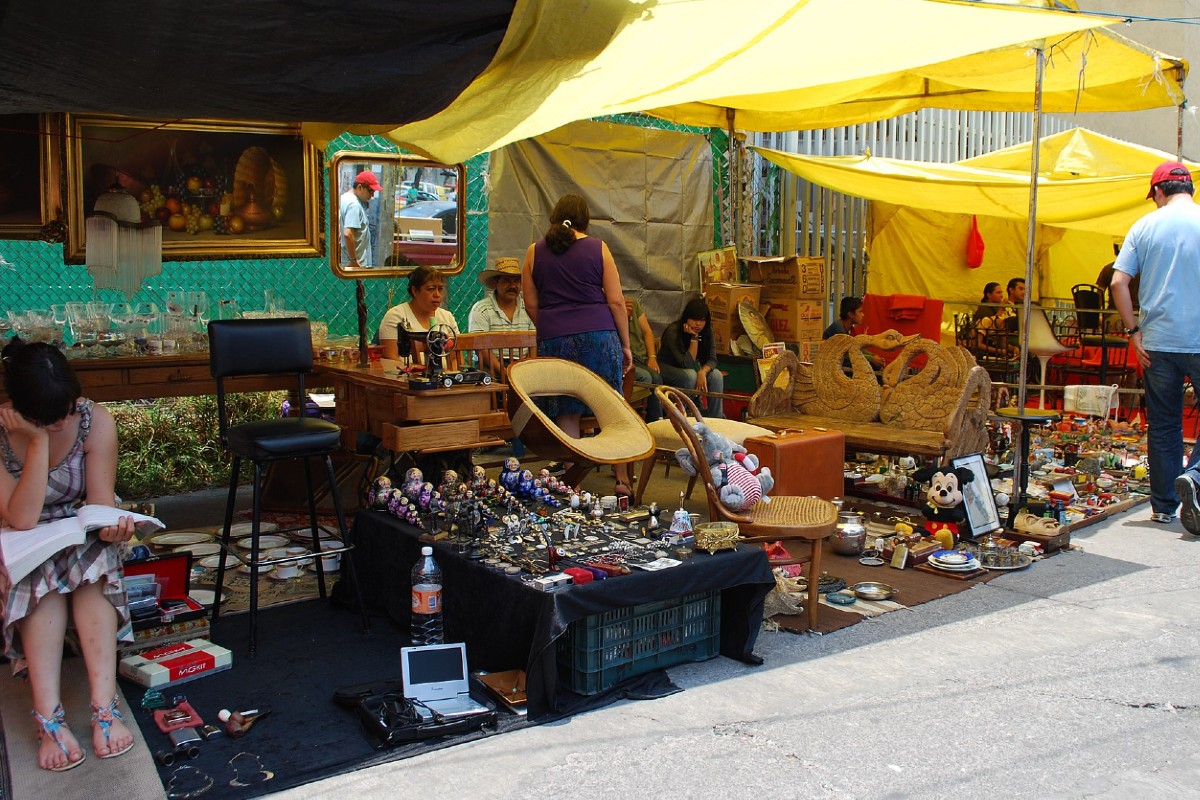
Today, this ancient history can be seen in its offerings, with the Sunday market selling antiques, clothing, and second-hand items, among other things.
Tepito
Located in the Barrio Bravo, right in the heart of Mexico City, between the Morelos and La Lagunilla neighborhoods, the tianguis Tepito is famous for being one of the most well-stocked markets. At Tepito, you can find almost anything you want to buy. They sell both national and imported clothing, original or cloned, as well as branded clothing, sneakers, and bags. There are also stalls offering micheladas, making Tepito a great place to visit if you want to explore a tianguis with a wide variety of products.
Learn all about: Famous Mexican Women: Pioneers Who Forged History
Notable Tianguis in Other States of Mexico
Mexico City is not the only place with popular tianguis; other states also have notable tianguis. Here, we will talk about them:
Tianguis El Baratillo, Jalisco
This tianguis in Jalisco is iconic in the city of Guadalajara because it is one of the largest tianguis in Mexico, where you can find a variety of products such as clothing, fruits, food, shoes, bicycle parts, and much more. Tianguis El Baratillo spans more than 50 blocks and has 10,000 stalls. You can visit this market in true Mexican style every Sunday on Juan R. Zavala Street, from the Glorieta Santa María neighborhood to Alvaro Obregón Street. It is important to mention that Tianguis El Baratillo is approximately 54 years old and stretches around 6 kilometers.

Tianguis Artesanal Tonalá, Jalisco
This tianguis in Jalisco is also very popular and consists of handicrafts, Mexican food, and much more, with incredible prices and approximately 3,000 to 4,000 vendors. It is located on the streets of Juárez, Madero, Cruz Blanca, Santos Degollado, and the Tonaltecas and Tonalá Avenues, on Thursdays and Sundays from 8:00 AM to 3:00 PM. However, some vendors set up in Tonalá from 6:00 AM and leave at 6:00 PM. It is important to note that the Tonalá tianguis is 30 minutes from downtown Guadalajara, making it very popular among locals and tourists.
Tianguis de Chilapa, Guerrero
The Chilapa tianguis is rich in culture and traditions, giving indigenous farmers the opportunity to sell their products. The Chilapa tianguis is one of the oldest in Mexico and also one of the most active and colorful in the country. It is held every Sunday, where you can find beans, onions, tomatoes, radishes, corn, and all kinds of crops you can imagine. This tianguis offers handicrafts, agricultural products, and gastronomy. You can also buy furniture, poultry, tiger masks, hats, various figurines, clay dishes, Olinalá boxes, and much more. Chilapa is made up of artisans, farmers, cooks, and merchants, and usually, the stall owners are descendants who have inherited their spots.
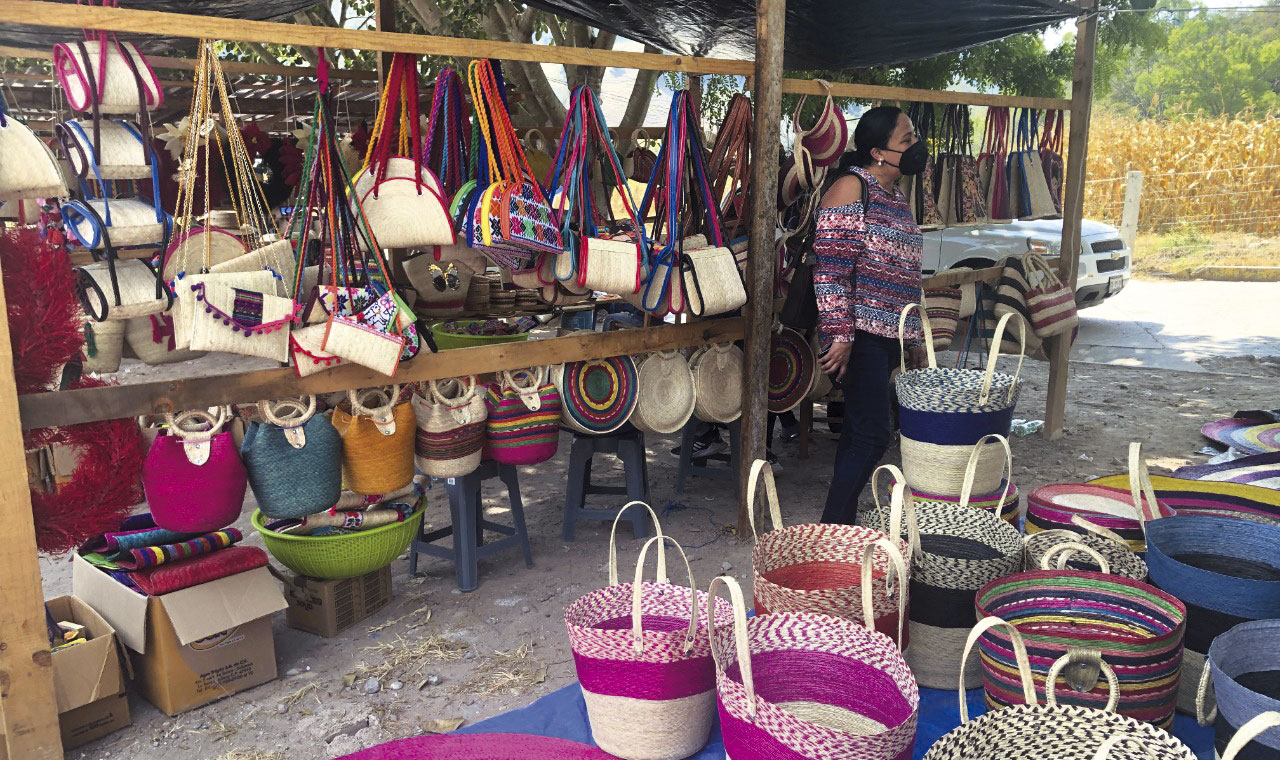
Here’s what you should know about: Mexican Telenovelas: A Deep Dive into Their Popularity and Impact
For those who wish to visit the Chilapa tianguis, it is located in the municipality of Chilapa, an hour from Chilpancingo.
Now that you know what tianguis are and which are the most popular, are you ready to visit them?


